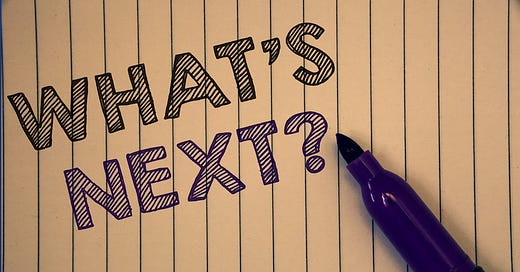Today’s What’s Next was sparked by an article from Korn Ferry discussing artificial intelligence in hiring. Before I get into that story, let’s take a little detour…
We all have questions—concerns even—about the good and bad of AI. But I knew the tide had turned when a self-proclaimed tech skeptic friend proudly told me she had used ChatGPT to help craft a roast toast for a friend’s 50th birthday. She said her new friend “Chat” helped strike just the right mix of Nikki Glaser and John Mulaney—edginess with polish.
So, if my Luddite friend embraces AI, we all will be. The key is not just using it but mastering its capabilities so that it serves us rather than the other way around.
People vs. Machine: A Job Search Story
One of my recent clients, let’s call him Dave, found himself on the wrong side of AI when he began job hunting after being laid off. He sent out 500 resumes—and landed just three interviews. Frustrated, he turned to me for career coaching.
His biggest challenge was the Applicant Tracking Systems (ATS). These AI-driven tools scan resumes, looking for keyword matches, formatting cues, and other factors that supposedly identify the “best” candidates for a role. However, as Dave learned the hard way, what AI sees as “best” doesn’t always align with human decision-making.
Dave was determined to crack the system. He believed that with enough tweaking, he could build the perfect resume. But I told him that wasn’t the key to success. Instead, I pushed him to focus on human connections—networking, attending industry events, having coffee chats with customers, and refining his value proposition in honest conversations. It’s not about looking for a job with these meetings but finding out that everyone wants to help.
He disagreed. He kept refining his resume. Then, he responded to another 100 positions. And got nowhere.
Eventually, we parted ways. A few months later, Dave emailed me to say he had returned to his old company as a contract worker, earning less than before.
It was a harsh lesson but worth sharing: AI isn’t going anywhere, but neither is the power of human connection.
Photo by Cottonbro Studio from Pexels
Mastering AI and Keeping Your Humanity
If you’re job searching in an AI-driven world, here’s how to work with the system instead of getting lost in it:
1. Play the AI game smarter – Adjust your resume to match the exact language and keywords in the job description so the system recognizes the skill match.
2. Be creative – Instead of a plain resume, try adding an infographic, a one-page career story, or a client testimonial to stand out.
3. Become a thought leader – Post insights on LinkedIn, engage in discussions, and start a blog. Some ATS tools now scan social media, so ensure your content signals expertise.
4. Use your humanity – AI can’t replace actual human relationships. Build your network, have conversations, and show up as a whole person. There are ways to connect even if you’re an introvert—check out Susan Cain’s TED Talk on The Power of Introverts.
5. Think beyond the job title – AI sorts candidates based on rigid criteria, but your career isn’t just a keyword search. Instead of chasing “perfect-fit” roles, focus on where your skills, experience, and unique strengths can bring value in new ways. It’s not just about the technical aspects of the job—it’s about who you are as a leader, problem-solver, and team player. Companies don’t just hire skill sets; they hire people who contribute to their success.
The Bottom Line
AI is changing the job market, but it can’t replace relationships, creativity, and the ability to make real connections. Job seekers who balance innovative AI strategies with human interaction will always have the advantage.
So, What’s Next for you? Will you try to outsmart the algorithm or step outside it and take control of your career? Post your ideas below.
New Offering
Expanding My Work: Now Offering Individual Counseling
Over the years, many people have asked if I would open up my calendar for individual counseling—not just coaching but more profound work on personal challenges, whether related to career transitions, workplace struggles, anxiety, or depression.
I’m excited to share that I’ve decided to make space for a limited number of individual counseling sessions. This offering represents a return to the roots of my career when I worked exclusively in clinical practice. While I’m not shifting back to full-time therapy, the opportunity to reconnect with this work meaningfully feels energizing.
If you’re navigating a tough career decision, dealing with stress, or looking for a space to work through personal challenges, I invite you to check out my new counseling website. If it feels like the right fit, click below, and let’s set up a time to talk.







